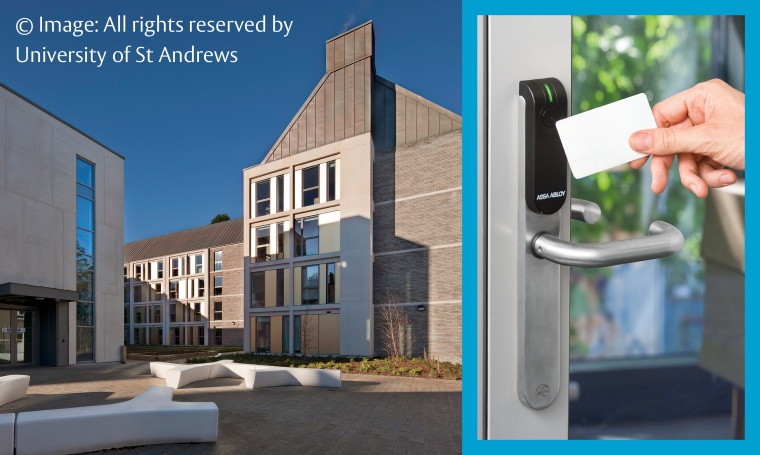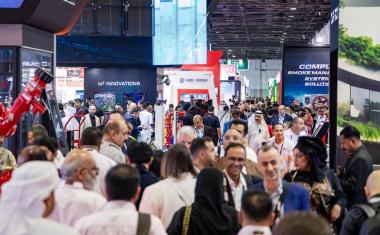Assa Abloy: Electronic Access Control Committed to Sustainability
As home of the renowned St Andrews Prize for the Environment, the University of St Andrews has sustainability at the heart of its ethos. For student accommodation, university managers sought energy-efficient access control which respected and reflected these principles - and found their solution in Assa Abloy's Aperio system.
A major challenge facing the university was that multiple different standalone access control technologies had been installed piecemeal at student halls over the years. To upgrade the accommodation, university managers sought a more suitable, integrated solution.
They university chose Aperio battery powered electronic escutcheons from Assa Abloy Opening Solutions. Approximately 1,600 doors so far are equipped with electronic access control — without cabling.
The Aperio devices integrate fully and work flexibly with both the university’s existing central system and their student ID card. University security managers continue to enjoy the efficiency benefits of monitoring and controlling access from a single point and in real time, including for doors in multiple buildings.
Security and energy efficiency
In comparison to a wired access control solution, Aperio devices offer significant energy efficiency benefits. Escutcheons are wireless, so can be installed with little energy use and no need for wiring to mains electricity. They consume zero energy when idle and run on standard batteries, consuming little power during operation.
Maintenance involves a change of battery every two years. Through its entire life-cycle, Aperio combines energy efficiency with cost effectiveness: Energy cost savings during operation are estimated to be around 70 percent lower than for comparable wired locking. In doing so, Aperio contributes to the university’s sustainability goals.
Aperio locks’ online integration with St Andrews’ central management system has improved access for all building users. “Aperio interfaces with our central access control system, which gives us central management and control,” says Pauline Brown, Associate Chief Information Officer at University of St Andrews. “We get 24/7 monitoring and reporting when required.”
Student ID is also combined with the room entry credential, which saves issuing two cards. Staff and maintenance teams can have access rights issued or changed with a couple of clicks in the system. The whole experience is streamlined.
The Aperio advantage
Battery powered Aperio cylinders, escutcheons, handles and locks can be fitted as a new access control system or extend an existing installation by linking new doors to the same system wirelessly. There’s no need for staff to change their credentials, nor for anyone to carry more than one card or fob.
Aperio is built to work seamlessly within almost every building system, from over 100 different manufacturers and counting. One control panel manages everything.
Installion is quick, because there’s no cabling around the door, no invasive building work, and no need to change door hardware. Aperio devices fit almost any opening or security level, wood, glass or aluminium doors, from fire and escape doors to meeting rooms, labs and offices.
















